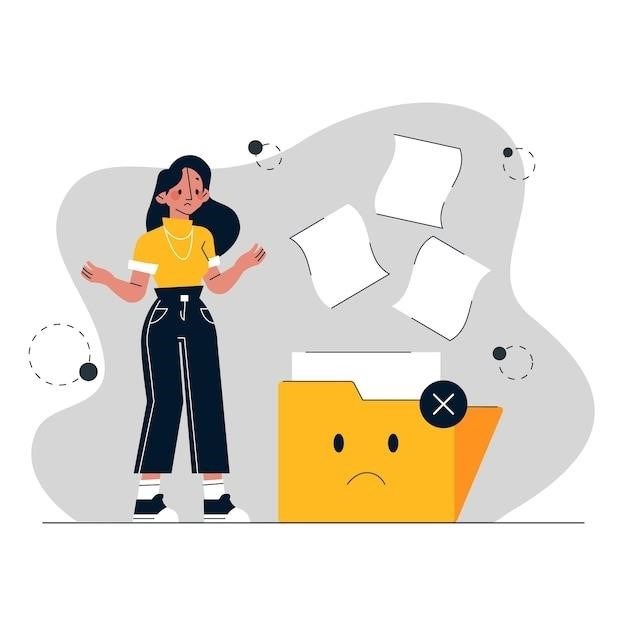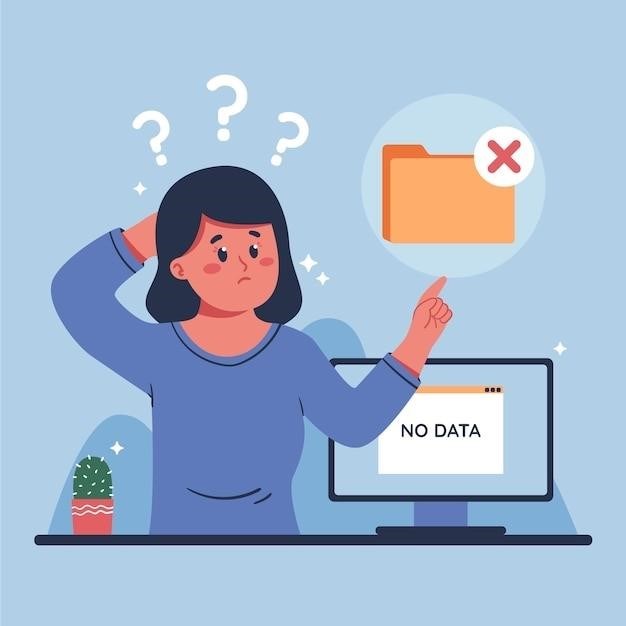
How to Do Nothing⁚ Resisting the Attention Economy
This book is about how to hold open that place in the sun. It is a field guide to doing nothing as an act of political resistance to the attention economy, with all the stubbornness of a Chinese nail house blocking a major highway.
Introduction
In a world dominated by constant connectivity and the relentless pursuit of productivity, Jenny Odell’s “How to Do Nothing⁚ Resisting the Attention Economy” offers a refreshing counterpoint. This insightful book challenges our ingrained societal norms and encourages us to reclaim our time and attention, recognizing their inherent value beyond the confines of the “attention economy.” Odell argues that doing nothing, far from being a sign of laziness or apathy, is an act of resistance and a vital step towards personal and societal well-being. Through compelling narratives and insightful observations, she unveils the detrimental effects of the attention economy, where our attention is constantly being monetized and manipulated, leaving us feeling overwhelmed and disengaged from our own lives.
The Attention Economy

Odell meticulously dissects the concept of the “attention economy,” a system where our attention, once a personal resource, has become a commodity traded for profit. She highlights how technology, particularly social media platforms, has become intricately woven into this system, constantly vying for our attention through algorithms designed to keep us engaged and scrolling. This relentless demand for our attention, often fueled by the promise of instant gratification and the fear of missing out, leaves us feeling drained and disconnected from our surroundings. Odell argues that this constant stimulation, fueled by the need for validation and engagement, hinders our ability to engage in deeper contemplation, creative pursuits, and meaningful connections.
The Case for Doing Nothing
Odell challenges the prevailing notion that productivity is inherently virtuous, arguing that constant engagement in the attention economy can lead to burnout and a disconnect from ourselves and the world around us; She advocates for the power of “doing nothing” as a form of resistance against this relentless pursuit of productivity. This isn’t a call for laziness or apathy, but rather a plea to reclaim our attention and allocate it to activities that nourish our minds, bodies, and spirits. Odell argues that “doing nothing” allows us to step back from the constant demands of the attention economy, providing space for reflection, creativity, and a deeper understanding of our own needs and desires.
How to Do Nothing⁚ Changing Your Attention
Odell suggests that we can begin to reclaim our attention by cultivating mindful practices. She emphasizes the importance of “deep listening,” a state of attentiveness that goes beyond simply hearing sounds and encompasses a deeper engagement with the world around us. Deep listening, she argues, allows us to break free from the constant barrage of information and stimuli that characterize the attention economy. Odell also highlights the role of mindfulness and meditation in fostering a more intentional and focused approach to our attention. These practices, she suggests, can help us become more aware of our thoughts and feelings, allowing us to better manage our attention and resist the constant pull of distractions.
Deep Listening
In the book, Odell introduces the concept of “deep listening” as a powerful tool for reclaiming our attention. She describes deep listening as a state of heightened awareness, where we actively engage with the sounds around us, not just passively hearing them. It involves paying attention to the nuances of sound, the textures of different noises, and the subtle ways in which sound interacts with our environment. This practice, Odell argues, allows us to break free from the constant barrage of information and stimuli that characterize the attention economy, allowing us to focus our attention more intentionally and engage with the world in a more meaningful way.
Mindfulness and Meditation
Odell emphasizes the importance of mindfulness and meditation as practices that can help us break free from the constant stream of thoughts and distractions that dominate our modern lives. Mindfulness, she explains, involves bringing our attention to the present moment, observing our thoughts and feelings without judgment. Meditation, a practice rooted in mindfulness, offers a structured way to cultivate this awareness. Through regular meditation, we can learn to quiet the incessant chatter of our minds, creating space for stillness and reflection. This inner stillness, Odell suggests, can be a powerful antidote to the constant demands of the attention economy, allowing us to reconnect with ourselves and the world around us in a more authentic and meaningful way.
Disconnect from Technology
In the digital age, our constant connection to technology can be a major obstacle to doing nothing. Odell argues that disconnecting from technology is crucial for reclaiming our attention and fostering a sense of presence. This doesn’t necessarily mean abandoning technology altogether, but rather being mindful of how we use it. She encourages us to set aside time for digital detox, where we unplug from our devices and engage in activities that require our full attention, such as reading, writing, or spending time in nature; By consciously disconnecting from the digital world, we can create space for introspection, creativity, and genuine connection with ourselves and others. This conscious disengagement, Odell believes, is a vital step in resisting the relentless demands of the attention economy and reclaiming our agency in a world that often feels dominated by technology.
How to Do Nothing⁚ Changing Your Time
Odell argues that changing how we use our time is just as important as changing how we use our attention. In a society obsessed with productivity and efficiency, we’re often pressured to fill every moment with activity. However, Odell encourages us to embrace a different approach to time, one that prioritizes rest, reflection, and meaningful engagement. This involves challenging the notion that every moment must be productive and recognizing the value of simply being. She highlights the importance of slowing down, taking breaks, and making space for activities that nourish our minds and souls. By shifting our focus from constant productivity to meaningful experiences, we can create a more fulfilling and balanced life, one that isn’t dictated by the demands of the attention economy.
Embrace Slowness
In a world dominated by speed and constant stimulation, Odell advocates for embracing slowness as a form of resistance. She suggests that slowing down allows us to break free from the relentless cycle of productivity and reconnect with our surroundings. This could involve taking a leisurely walk in nature, engaging in a slow and mindful activity like gardening, or simply savoring a cup of coffee without rushing. By slowing down, we create space for reflection, contemplation, and deeper engagement with our experiences. This conscious slowing down can help us to appreciate the simple pleasures of life and resist the constant pressure to be busy and productive.
Prioritize Rest and Relaxation
Odell emphasizes the importance of prioritizing rest and relaxation as essential components of a fulfilling life. She argues that our society often values productivity and busyness over rest, leading to burnout and a disconnect from our own needs. She encourages readers to actively schedule time for rest and relaxation, whether it’s taking a nap, reading a book, or simply sitting quietly and letting our minds wander. By prioritizing rest and relaxation, we allow our bodies and minds to recharge, reducing stress and enhancing our overall well-being. This can lead to increased creativity, improved focus, and a greater sense of peace and contentment.
Engage in Meaningful Activities
Odell encourages readers to engage in activities that hold personal meaning and bring joy. She emphasizes that these activities do not have to be productive or result in tangible outcomes. It could be anything from gardening to volunteering, learning a new skill, or simply spending time with loved ones. The key is to focus on activities that nourish our souls and bring us a sense of fulfillment. This shift in focus away from constant productivity allows us to reconnect with our passions and interests, enriching our lives and providing a sense of purpose beyond the demands of the attention economy.
Benefits of Doing Nothing
Odell argues that embracing “doing nothing” offers numerous benefits, not only for our mental and emotional well-being but also for our creativity and productivity. By disconnecting from the constant stimulation of the attention economy, we create space for our minds to wander, allowing for fresh ideas and insights to emerge. This period of “nothingness” can lead to a renewed sense of clarity and focus, ultimately enhancing our ability to engage in meaningful work and creative pursuits. Moreover, doing nothing allows us to recharge and de-stress, fostering a sense of peace and contentment that can improve overall well-being.
Reduced Stress and Anxiety
In a world constantly demanding our attention, it’s no surprise that stress and anxiety are rampant. Jenny Odell argues that doing nothing provides a much-needed respite from this relentless pressure. By disconnecting from the constant influx of information and demands, we allow our minds to relax and decompress. This break from the “attention economy” can lead to a significant reduction in stress levels, as we are no longer bombarded with stimuli that trigger our fight-or-flight response. As a result, we experience a sense of calm and peace, allowing our bodies and minds to heal and restore themselves.
Increased Creativity and Productivity
Contrary to popular belief, doing nothing isn’t a waste of time; it can actually be a catalyst for increased creativity and productivity. When we free ourselves from the constant demands of the attention economy, our minds are allowed to wander and explore new ideas. This state of “unfocus” allows for a deeper level of processing and reflection, leading to unexpected insights and innovative solutions. Moreover, by taking breaks from the digital world, we can recharge our mental batteries and return to our work with renewed focus and energy. This can lead to a significant boost in productivity, as we are able to work more effectively and efficiently.
Enhanced Well-being
In a world that constantly pushes us to be productive and connected, doing nothing can feel like a radical act. However, it is precisely this act of resistance that can lead to a profound sense of well-being. By disconnecting from the constant stream of information and demands, we give ourselves the space to reconnect with our inner selves. This can lead to a decrease in stress and anxiety, as we are no longer bombarded with external pressures. We also become more attuned to our own needs and desires, leading to a greater sense of self-awareness and fulfillment. Ultimately, doing nothing can be a powerful way to reclaim our time, attention, and ultimately, our well-being, allowing us to live more meaningful and fulfilling lives.
Practical Tips for Doing Nothing
Embracing doing nothing doesn’t have to be a drastic life overhaul. It can be incorporated into your daily routine with small, intentional changes. Start by scheduling specific time slots for “doing nothing.” This could be a 15-minute break in the afternoon to simply sit and observe, or a longer period on the weekend to disconnect from technology and engage in a relaxing activity. Create a dedicated “do nothing” space in your home – a comfortable chair by a window, a cozy corner with a soft blanket, or even a quiet outdoor spot. This space should be free from distractions and designed to promote relaxation and mindfulness. Ultimately, the key to doing nothing is to find what works for you. Experiment with different activities, explore different environments, and discover the unique ways that doing nothing can enhance your life.
Schedule Time for Nothing
In our busy lives, it’s easy to feel overwhelmed and constantly “on.” Scheduling time for nothing might seem counterintuitive, but it’s essential for reclaiming our attention and fostering a sense of calm. Treat doing nothing as a crucial appointment, just like a meeting or a doctor’s visit. Block out time in your calendar, whether it’s a few minutes each day or a longer period on the weekends. This dedicated time allows you to step away from the demands of the attention economy and engage in activities that nourish your mind and soul. Whether it’s taking a walk in nature, reading a book, or simply sitting in silence, these scheduled “do nothing” sessions provide a much-needed respite from the constant stimulation of our digital world.
Create a “Do Nothing” Space
A dedicated “do nothing” space acts as a sanctuary for your mind and a physical manifestation of your commitment to resisting the attention economy. This space can be as simple as a cozy corner in your living room or as elaborate as a dedicated meditation room. The key is to create a space that is free from distractions and conducive to relaxation and reflection. This might involve minimizing clutter, incorporating calming colors and textures, and adding elements that bring you peace, such as plants, soft lighting, or calming artwork. The “do nothing” space serves as a physical reminder to step away from the constant demands of the digital world and cultivate a more mindful and present state of being.
Find Your Own Way to Do Nothing
Doing nothing is not a one-size-fits-all endeavor. What constitutes “doing nothing” will vary from person to person and may even change over time. It’s essential to experiment and discover activities that allow you to truly disconnect from the demands of the attention economy. Some may find solace in gardening, while others might prefer reading a book, taking a long walk in nature, or simply gazing at the clouds. The key is to find activities that bring you a sense of peace, purpose, and a break from the constant stimulation of the digital world. Embrace the freedom to define “doing nothing” on your own terms and discover what truly nourishes your mind, body, and spirit.
In an era dominated by the constant pursuit of productivity and engagement, Jenny Odell’s “How to Do Nothing” offers a refreshing and necessary counterpoint. It challenges us to reclaim our attention, prioritize rest and relaxation, and engage in meaningful activities that nourish our well-being. Doing nothing is not a sign of laziness or inefficiency; it’s an act of resistance against the forces that seek to consume our time and attention. By embracing moments of stillness and disengagement, we can cultivate a deeper connection with ourselves, our communities, and the world around us. “How to Do Nothing” is a powerful reminder that doing nothing is not just a personal choice, but a political act with the potential to create a more mindful and sustainable future.


